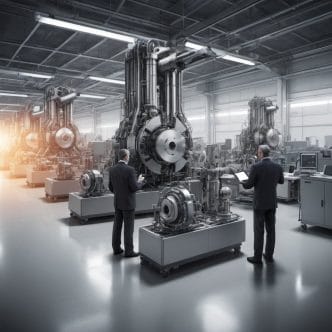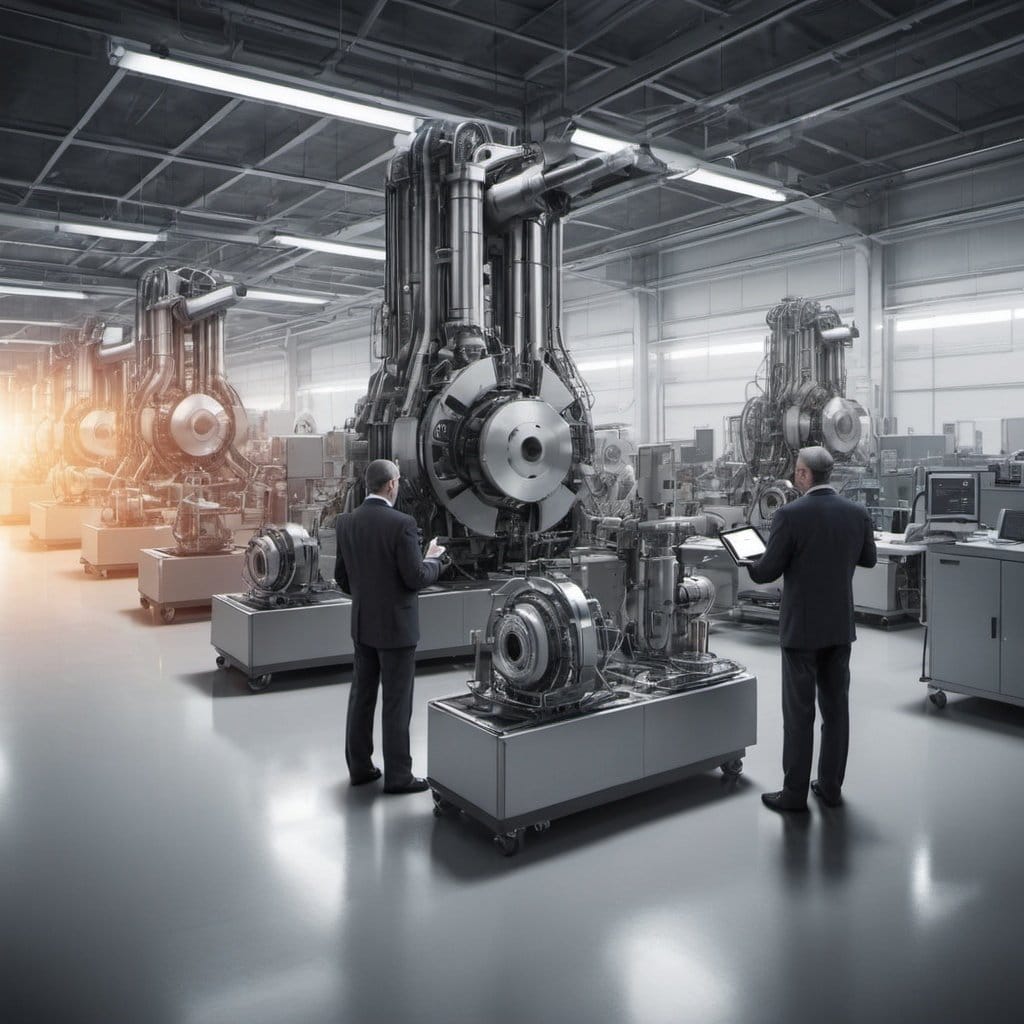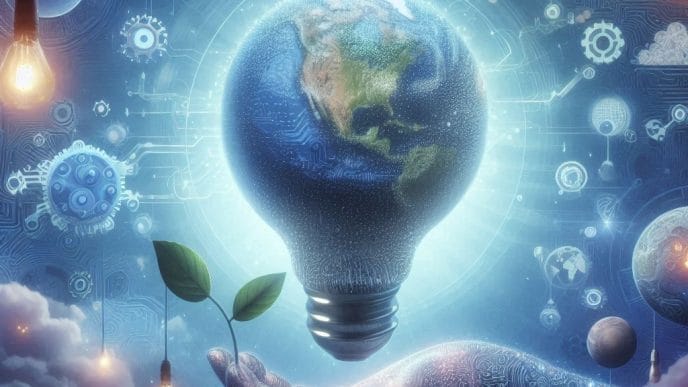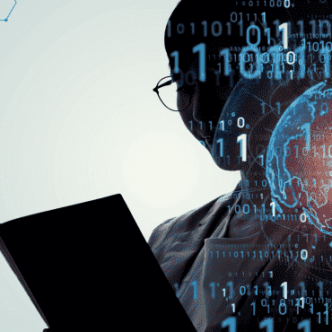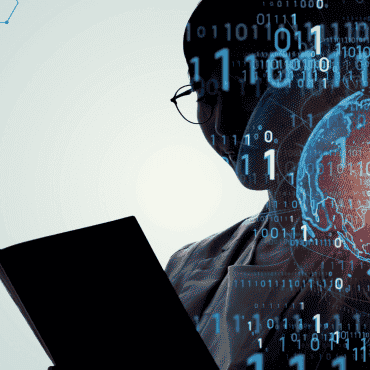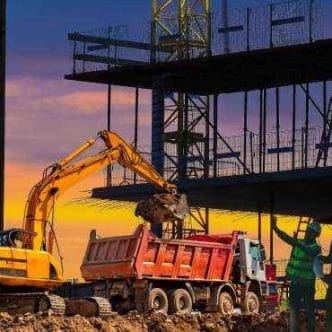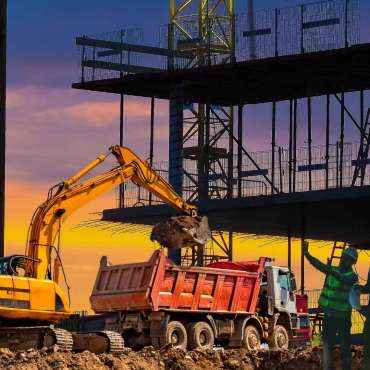The concept of Industry 5.0 envisions a future where human creativity and advanced technologies seamlessly collaborate, promising unprecedented levels of customization, sustainability, and resilience. This new industrial era promises to transcend automation, ushering in the age of collaboration between human ingenuity and advanced technology. While the precise labeling of technological eras may be up for debate, the vision of Industry 5.0 – a fusion of human and machine intelligence with a focus on sustainability and resilience – provides a future-proof strategy for India’s manufacturing sector. This article explores how India can strategically integrate these goals to accelerate its technological leadership and drive economic growth in an era of constant innovation.
Understanding Industry 5.0: A Human-Centric Revolution
Industry 5.0 marks a departure from its predecessor, Industry 4.0, by shifting the focus beyond mere automation. While Industry 4.0 laid the foundation for smart factories, hyperconnected systems, and data-driven insights, Industry 5.0 underscores the essential role of human workers. It envisions a future where the creativity, problem-solving abilities, and adaptability of humans are not replaced by machines, but instead augmented by them.
Here’s how this human-centric revolution manifests in practice:
- Collaborative Workspaces: No longer will robots operate in isolation. Industry 5.0 imagines collaborative robots (cobots) designed to work safely and effectively alongside humans. Workers and cobots will share tasks, with robots handling repetitive or physically demanding aspects while humans contribute their judgment, nuanced skills, and adaptability.
- Personalization and Creativity: The human-machine partnership aims to enable mass customization. Consumers will be able to order products tailored specifically to their preferences, with humans and machines working in tandem to ensure both quality and individuality.
- Upskilling and Adaptability: Industry 5.0 underscores the need for ongoing workforce training and upskilling. As automation changes the nature of work, humans will need to acquire new skills to complement technological advancements and remain valuable contributors to the manufacturing process.
Key Technologies Driving the Change
Industry 5.0 is driven by an evolving suite of technologies that blur the lines between the physical and digital worlds while facilitating the human-machine collaboration at its core. Here’s a deeper look:
- Collaborative Robots (Cobots): Beyond being safety-focused, cobots are becoming increasingly intelligent. They utilize vision systems, advanced sensors, and AI to perceive their surroundings, adapt to changes in the workspace, and learn new tasks through demonstration or simulation. This allows for more seamless and flexible collaboration between humans and their robotic counterparts.
- Artificial Intelligence (AI): AI is becoming more sophisticated, moving beyond data analysis into decision-making and problem-solving domains. AI systems can optimize production schedules, detect anomalies in processes, and even assist in generative design. Additionally, AI is playing a significant role in enabling robots to “learn” from human demonstrations, making them easier to program and integrate alongside people.
- Big Data and IoT: The true ‘fuel’ for Industry 5.0 systems is data. IoT sensors embedded throughout the manufacturing ecosystem generate vast datasets that can be analyzed for insights into asset performance, predictive maintenance, and supply chain optimization. This allows for unparalleled visibility into processes for real-time optimization.
- Augmented Reality (AR): AR overlays digital information onto the real world, offering a new dimension to manufacturing. It empowers workers with real-time instructions, remote expert assistance, and digital twins for simulation and design validation. This reduces errors, enhances skill transfer, and boosts productivity.
- Additive Manufacturing (3D Printing): Additive manufacturing plays a crucial role in enabling mass customization. Its ability to produce complex geometries on demand expands design possibilities and allows for the creation of highly personalized products.
- Digital Twins: While not strictly a single technology, this concept deserves mention. Digital twins are virtual replicas of physical assets, processes, or entire production systems. They allow for simulation, optimization, and prediction in a safe digital space before changes are implemented in the actual factory, facilitating rapid innovation and minimizing risk.
India’s in Industry 5.0
India, with its vast pool of skilled professionals and burgeoning technological infrastructure, stands poised to lead in Industry 5.0. Our engineers, data scientists, and designers form a formidable ensemble. Research and Development (R&D) hubs across India can spearhead innovations, bridging the gap between theory and practical implementation. From Bangalore’s tech corridors to Pune’s automotive labs, India hums with potential.
- Expanding the Talent Pool: India’s skilled professional base isn’t limited to engineers and data scientists. There’s a growing talent pool of designers, skilled tradespeople, and technicians who will be essential in an Industry 5.0 environment.
- Beyond Tech Hubs: While cities like Bangalore are crucial, let’s acknowledge the potential of emerging innovation ecosystems in smaller cities and the vast rural areas of India.
- Actionable Strategy: India could establish incubation centers and technology parks specifically focused on Industry 5.0 solutions in these less tapped regions to foster a more distributed innovation landscape.
Economic Implications
Industry 5.0 isn’t a mere buzzword; it’s an economic catalyst. The World Economic Forum predicts that India’s Gross Domestic Product (GDP) could swell by $1 trillion by 2030 through Industry 4.0 adoption. With Industry 5.0 on the horizon, the possibilities multiply. Some projections envision India as a $30-$40 trillion economy by 2047. However, sustained growth in per capita GDP remains critical for this vision to materialize.
- Addressing Income Inequality: While focusing on GDP growth is important, let’s highlight that Industry 5.0 offers a chance to address income inequality. By empowering MSMEs and creating opportunities in rural areas, India can ensure that the benefits of Industry 5.0 are distributed fairly.
- Emphasis on Sustainability: India’s commitment to sustainable manufacturing practices aligns perfectly with Industry 5.0’s emphasis on environmental responsibility. This could position the country as a leader in sustainable manufacturing solutions on the global stage.
MSMEs: The Unsung Heroes
Micro, small, and medium-sized enterprises (MSMEs) form the backbone of Industry 5.0. These nimble entities innovate, adapt, and contribute significantly to the ecosystem. Whether it’s a garage-based startup experimenting with additive manufacturing or a boutique electronics firm optimizing supply chains, MSMEs drive the transformation.
- Specific Examples: Let’s highlight a few real-world examples of MSMEs thriving in this space:
- A traditional textile manufacturer adopting 3D printing for customization and small-batch production
- A small automotive parts supplier utilizing AI for quality control and defect reduction
- A rural MSME using AR to offer remote training and troubleshooting for its products
- Government Support: Highlight the importance of government support mechanisms like targeted funding, access to technology, and ease of doing business for MSMEs.
Live Examples of Industry 5.0 Implementation
The principles of Industry 5.0 are moving from the theoretical realm into real-world applications. Let’s explore some compelling examples, with a spotlight on initiatives from India:
Collaboration Between Humans and Machines: In a prime example of human-machine synergy, India is utilizing 3D imaging systems mounted on automated guided vehicles (AGVs) during minimally invasive surgical procedures. This technology allows surgeons to view real-time, high-resolution images of the patient’s anatomy, enhancing precision and reducing risks. The AGV moves autonomously, guided by the surgeon’s inputs, exemplifying the collaborative potential of Industry 5.0.
Cross-Industry Innovation: Bengaluru-based Knowledge Lens offers a suite of advanced technologies crucial to Industry 5.0 adoption. Their expertise in data science, AI, AR, and IoT translates into practical solutions across manufacturing, pharmaceuticals, and automation. This showcases the interdisciplinary nature of Industry 5.0 and emphasizes the need for companies that can bridge the gap between different technological domains.
Robots in Healthcare During COVID-19: The deployment of robots in Indian hospitals during the COVID-19 pandemic underscores the potential of Industry 5.0 in crisis management. Robots handled tasks like initial patient assessment, reducing the risk of infection for healthcare workers while maintaining prompt care. This demonstrates how Industry 5.0’s collaborative approach can enhance both safety and efficiency in critical situations.
While these examples highlight promising developments, it’s important to remember that Industry 5.0 implementation is still relatively nascent. Scaling these solutions and achieving widespread adoption will require ongoing investment and collaboration. Additionally, as human-machine interactions intensify, it’s crucial to address ethical concerns around responsibility, accountability, and the impact on the workforce.
Conclusion
Industry 5.0 isn’t a distant dream; it’s unfolding before our eyes. We must embrace this convergence of human intellect and digital prowess — one algorithm, one prototype, and one breakthrough at a time. As India embarks on its journey towards Industry 5.0, it must leverage its vast human capital and burgeoning technological infrastructure to chart a path to leadership. Initiatives like Make in India, Skill India, and Start-up India serve as catalysts, providing the necessary impetus for innovation and growth. The economic potential is tremendous, with projections suggesting that India could achieve a $30-$40 trillion economy by 2047, fueled in part by Industry 5.0 adoption. By prioritizing investments in research and development, India can become a hub for cutting-edge innovation, driving not only sustainable growth but also inclusive development of its MSME sector.
Industry 5.0 represents a watershed moment in India’s quest for technological and economic leadership. As the country navigates the opportunities and challenges, it must remain steadfast in its commitment to fostering a culture of innovation, collaboration, and inclusivity. With foresight, determination, and strategic foresight, India can emerge as a beacon of Industry 5.0, propelling itself towards a future defined by prosperity, progress, and excellence.
____________
Written By: JK Pandey
